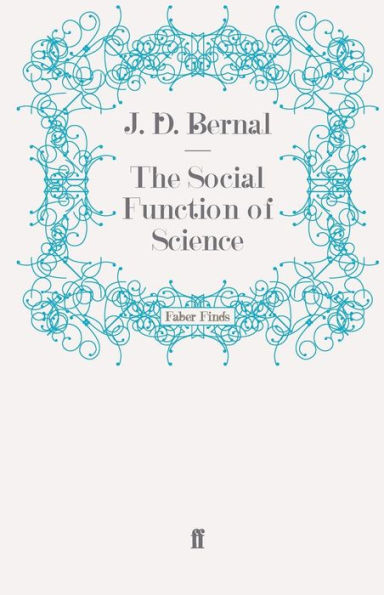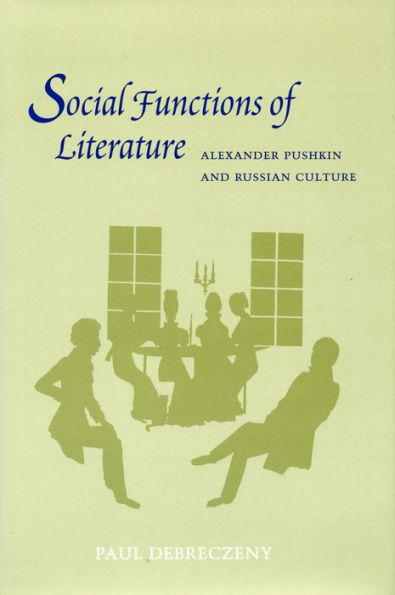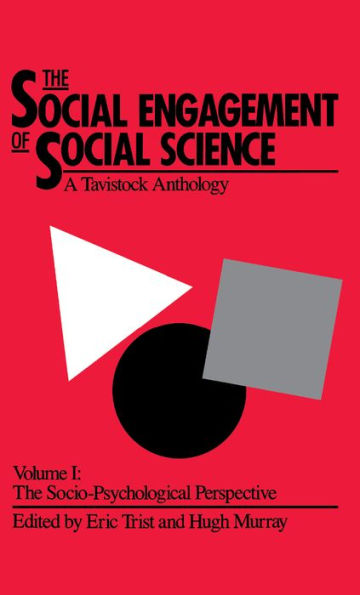Home
The Social Function of Science
Loading Inventory...
Barnes and Noble
The Social Function of Science
Current price: $32.00


Barnes and Noble
The Social Function of Science
Current price: $32.00
Loading Inventory...
Size: OS
*Product Information may vary - to confirm product availability, pricing, and additional information please contact Barnes and Noble
J. D. Bernal's important and ambitious work,
The Social Function of Science
, was first published in January 1939. As the subtitle -
What Science Does
,
What Science Could Do
- suggests it is in two parts. Both have eight chapters. Part 1:
: Introductory, Historical, The Existing Organization of Scientific Research in Britain, Science in Education, The Efficiency of Scientific Research, The Application of Science, Science and War and International Science. Part 11:
: The Training of the Scientist, The Reorganization of Research, Scientific Communication, The Finance of Science, The Strategy of Scientific Advance; Science in the Service of Man, Science and Social Transformation and The Social Function of Science.
To quote Bernal's biographer, Andrew Brown, 'The Social Function of Science . . . was Bernal's attempt to ensure that science would no longer be just a protected area of intellectual inquiry, but would have as an inherent function the improvement of life for mankind everywhere. It was a groundbreaking treatise both in exploring the scope of science and technology in fashioning public policy, with Bernal arguing that science is the chief agent of change in society, and in devising policies that would optimize the way science was organized. The sense of impending war clearly emerges. Bernal deplored the application of scientific discoveries in making war ever more destructive, while acknowledging that the majority of scientific and technical breakthroughs have their origins in military exigencies, both because of the willingness to spend money and the premium placed on novelty during wartime.'
Anticipating by two decades the schism C. P. Snow termed 'The Two Cultures', Bernal remarked that 'highly developed science stands almost isolated from a traditional literary culture.' He found that wrong. Again, quoting Andrew Brown, 'to him, science was a creative endeavour that still depended on inspiration and talent, just as much as in painting, writing or composing.'
The importance of this book was such that twenty-five years after its publication, a collection of essays,
The Science of Science
, was published, in part in celebration, but also to explore many of the themes Bernal had first developed.
The Social Function of Science
, was first published in January 1939. As the subtitle -
What Science Does
,
What Science Could Do
- suggests it is in two parts. Both have eight chapters. Part 1:
: Introductory, Historical, The Existing Organization of Scientific Research in Britain, Science in Education, The Efficiency of Scientific Research, The Application of Science, Science and War and International Science. Part 11:
: The Training of the Scientist, The Reorganization of Research, Scientific Communication, The Finance of Science, The Strategy of Scientific Advance; Science in the Service of Man, Science and Social Transformation and The Social Function of Science.
To quote Bernal's biographer, Andrew Brown, 'The Social Function of Science . . . was Bernal's attempt to ensure that science would no longer be just a protected area of intellectual inquiry, but would have as an inherent function the improvement of life for mankind everywhere. It was a groundbreaking treatise both in exploring the scope of science and technology in fashioning public policy, with Bernal arguing that science is the chief agent of change in society, and in devising policies that would optimize the way science was organized. The sense of impending war clearly emerges. Bernal deplored the application of scientific discoveries in making war ever more destructive, while acknowledging that the majority of scientific and technical breakthroughs have their origins in military exigencies, both because of the willingness to spend money and the premium placed on novelty during wartime.'
Anticipating by two decades the schism C. P. Snow termed 'The Two Cultures', Bernal remarked that 'highly developed science stands almost isolated from a traditional literary culture.' He found that wrong. Again, quoting Andrew Brown, 'to him, science was a creative endeavour that still depended on inspiration and talent, just as much as in painting, writing or composing.'
The importance of this book was such that twenty-five years after its publication, a collection of essays,
The Science of Science
, was published, in part in celebration, but also to explore many of the themes Bernal had first developed.

















